Made famous by Shakespeare but perfected by DJ Moore Lofts, the Juliet balcony is one of our most popular additions to a loft conversion – and for good reason, too! Effortlessly stylish and highly practical, Juliet balconies allow plenty of natural light to enter, making any room feel more open and spacious. Yet, despite their rapidly increasing popularity, we’re still asked regularly, ‘What is a Juliet balcony?’ So, in this article, we’ll be using our extensive experience constructing first-class loft conversions in Buckingham to answer all of your Juliet balcony questions.
What Is A Juliet Balcony, And Are They Worth It?
Traditionally, balconies were created for entirely functional purposes. However, during the 18th century, Juliet balconies rose to prominence, having become associated with elegance and grandeur. Those connotations still apply today, as Juliet balconies remain a fashionable addition to any home. So, whether you’re considering an upgrade to your property or just a curious homeowner, keep reading for everything you need to know about Juliet balconies.
- What Are Juliet Balconies?
- Juliet Balcony vs Traditional Balcony
- Do I Need Planning Permission For A Juliet Balcony?
- Choosing The Right Position For A Juliet Balcony
- Can A Juliet Balcony Add Value To A House?
- Loft Conversion Juliet Balcony Inspiration
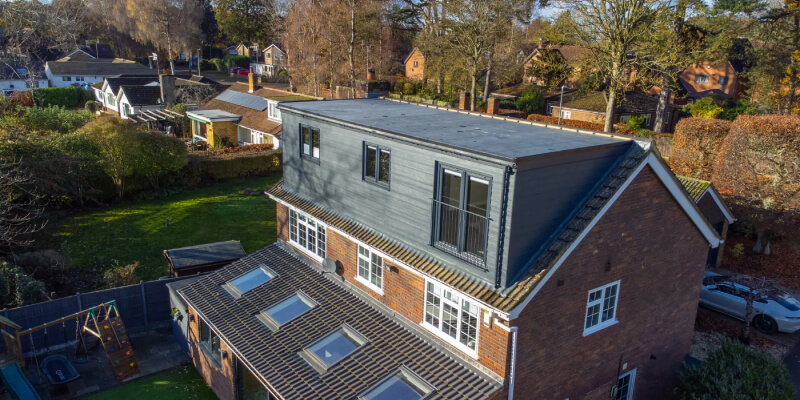
What Are Juliet Balconies?
While today’s Juliet balconies might differ slightly from the famous structure in Shakespeare’s Romeo and Juliet, their framework remains the same. A Juliet balcony is a small balcony or railing located just outside a window or a pair of French doors. It is different from traditional balconies in that it doesn’t protrude significantly from the building. They’re especially popular in more urban areas where space is at a premium. Modern Juliet balconies are characterised by a few key features:
- Minimal Floor Space: A Juliet balcony does not extend outward enough to stand on.
- Safety Railing: A railing, typically made from metal or glass, provides safety for the open doors and windows.
- Architectural Style: Usually designed with materials that complement the overall architecture.
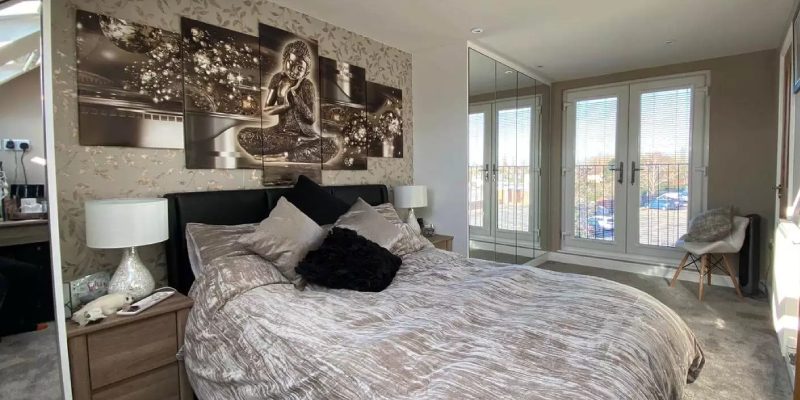
Juliet Balcony vs Traditional Balcony
Juliet balconies and traditional balconies are two of the most popular choices on the market right now, and both have distinct advantages and disadvantages.
Juliet Balcony Advantages
- Space Optimisation: Juliet balconies don’t require as much space as their traditional counterparts, making them ideal for more confined urban environments.
- Safety: All Juliet balconies are equipped with a safety railing flush against the building’s exterior. This makes them well suited to windows and French doors at height, where safety is paramount.
- Cost-Effective: With less construction work and fewer materials required, Juliet balconies are typically less expensive than traditional balconies.
Juliet Balcony Disadvantages:
- Limited Outdoor Space: The main downside of a Juliet balcony is the absence of outdoor standing space. Anyone looking to enjoy the view will have to do it from inside, behind the railing.
- Restricted Functionality: There’s no room to add plants or furniture to a Juliet balcony, meaning homeowners are limited in how they can decorate their space.
Traditional Balcony Advantages:
- More Outdoor Space: The key selling point of a traditional balcony is the additional space it can provide. There’s ample room for seating, plants and decorations, allowing it to act as an extension of your living space.
- Versatility: As there is more to work with on a traditional balcony, homeowners have greater flexibility in customising the framework.
Traditional Balcony Disadvantages
- Cost And Construction: Traditional balconies require more construction work, materials, and structural support, so they are often more costly than Juliet balconies.
- Safety: As there is standing space on a traditional balcony, they require greater safety measures, increasing costs further.
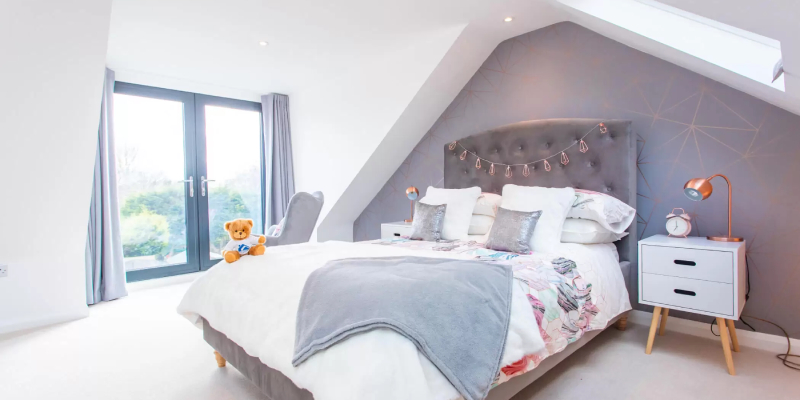
Do I Need Planning Permission For A Juliet Balcony?
Most balconies require planning permission before construction begins. However, Juliet balconies differ slightly in that they fall under permitted development because there is rarely any external floor space. A homeowner’s permitted development rights allow them to make certain changes to their property without obtaining planning permission. So, for the most part, planning permission is not required for Juliet balconies unless these exceptions apply:
- If the Juliet balcony has a floor, no matter how slim, it will be considered a raised platform and will need planning approval.
- If the property is listed or within a conservation zone, you will almost certainly require planning permission.
- If Juliet balconies are uncommon in the local area, planning permission may be required. Alternatively, you may be asked to restrict Juliet balconies to the rear of your property.
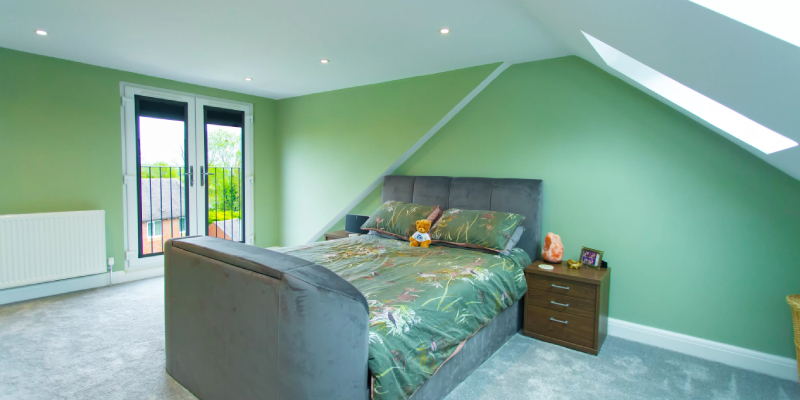
Choosing The Right Position For A Juliet Balcony
Before you make the decision to install a Juliet balcony in your home, you’ll need to think about where it will fit best. For many, this means creating a new opening or even extending the property to make the most of their Juliet balcony. For example, at DJ Moore Lofts, many of our dormer conversions in Milton Keynes are built with a focus on installing the homeowner’s dream Juliet balcony.
There are a few things you should consider when deciding where you want to build your Juliet balcony, including:
- Avoid any potential clashes with service or utility lines.
- Consider the location of rainwater downpipes, ventilation pipes, water and heating pipes, and cables.
- Allow enough room on either side of the opening to fix the railing.
- Don’t plan too close to the edge of a wall or another opening, like a window.

Can A Juliet Balcony Add Value To A House?
Well-designed Juliet balconies are a fantastic way to improve a property’s appearance and curb appeal. It’s well known that boosting these factors is one of the most effective ways to improve a property’s value. All balconies, including Juliet, can add 5-10% to the value of your property. Due to the relative affordability of a Juliet balcony, they’re likely to bring a significant return on investment if you decide to sell.
Additionally, those looking to install a loft conversion with a Juliet balcony will benefit from an even larger increase in value. The space added by a loft conversion typically increases the value of a home by 21%, and a Juliet balcony will only improve that percentage. If you’re looking to maximise your return on investment, check out our article outlining our top money-saving interior design ideas.

Loft Conversion Juliet Balcony Inspiration
The appeal of a Juliet balcony is clear. Whether you’re looking to bring the outside in or simply improve the value of your home, there are plenty of reasons to invest in one. But if you’re not convinced just yet, we’ve compiled some of our favourite Juliet balconies within loft conversions to inspire you.
Rise And Shine
This dreamy master bedroom reaps the full rewards of a Juliet balcony and has paired it with a VELUX® window to flood the room with golden sunlight. Picture sipping your morning coffee as you lean out of the French doors, taking in the beautiful views below. This space is the epitome of calm and easily obtainable with a Juliet balcony.

See full project: Flat Roof Dormer Conversion, Leighton Buzzard
Lose Yourself In Your Surroundings
This space perfectly demonstrates how effective a Juliet balcony is at bringing the outside in. In this example, the balcony is fitted with two huge VELUX® windows that can be pushed back to open up the space. With a balcony like this, you can get closer to the stunning surrounding countryside than would be impossible with just windows. This homeowner has centred this space around music, creating an area made for lazy summer afternoons.
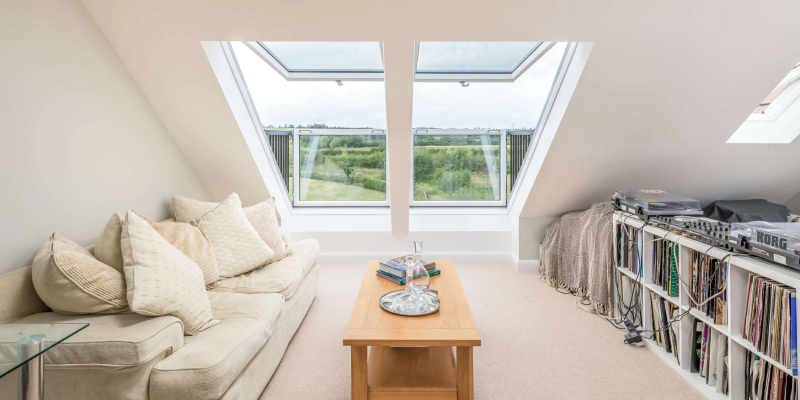
See full project: Dormer Conversion, Marston Moretaine
Open-Up Confined Spaces
This Juliet balcony gives a spacious and open feel to a relatively constricted room. And, while the French doors are relatively narrow, the balcony is equally as effective in offering panoramic views of the urban surroundings. The owner of this property uses this room as a multi-purpose space for living and working, and the Juliet balcony helps make both functions as enjoyable as possible.
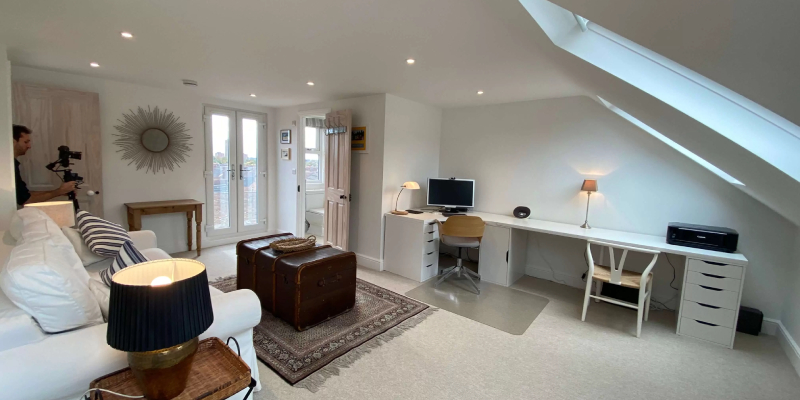
See full project: Dormer Conversion, Bedford
A Calming Retreat
In this example, the abundance of natural light a Juliet balcony provides has been maximised by framing it with windows on either side and an apex on top. The homeowner has even opted for a glass rail beyond the French doors to provide full-length, unobstructed views of the surroundings. Inside, the decor has been kept minimalist to create a calming retreat, excellent for winding down. This design effectively demonstrates the design flexibility you’re afforded with a Juliet balcony.
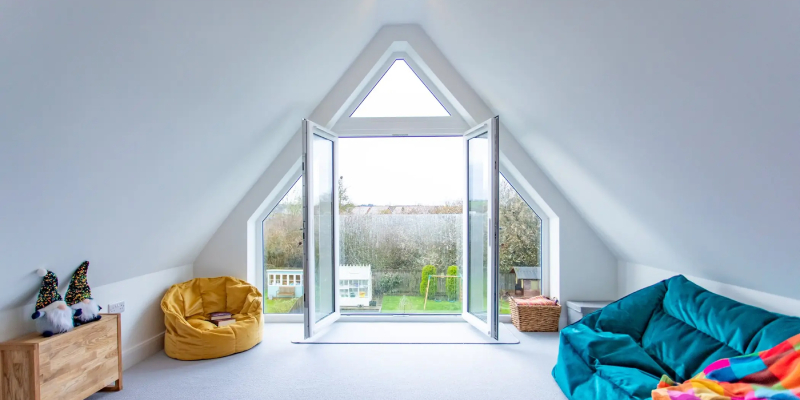
See full project: VELUX® Conversion, Wilstead
Ready To Install A Loft Conversion With A Balcony?
It’s no coincidence that Juliet balconies are among the most popular additions to our loft conversions. They’re stylish, highly functional, and great at boosting a property’s value. Additionally, they’re among the most cost-effective balcony solutions, so they’re a great option if you’re on a budget. With all of that in mind, it’s important you recruit the right team to install your Juliet balcony to help you choose the right location and framework.
If you’re ready to move forward with a loft conversion and Juliet balcony for your home, don’t hesitate to get in touch with our team at DJ Moore Lofts. We’ve been helping homeowners maximise the value of their properties through first-class loft conversions for over 12 years. Find out how we can support you and arrange your site survey today.





